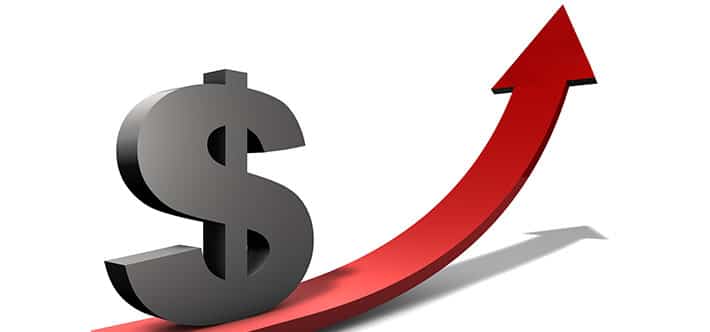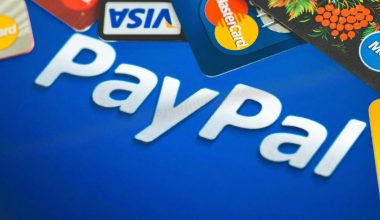Demand generation is a catch-all word for a variety of marketing initiatives that promote long-term engagement, such as lead generation, demand capture, and pipeline acceleration, in a sector where improving brand-to-customer relationships are crucial. It consists of a number of touchpoints intended to increase customer awareness of problems, position your brand as a reliable resource, provide leads, sell your solution, and if done well promote real brand loyalty. Hence in this post, you will get to know everything about the demand generation marketing strategy, example and the job description of a manager.
Now, let’s begin!!!
Demand Generation Marketing
The systematic process of generating interest in a good or a service is known as demand generation marketing. It functions by raising awareness of a product and enabling customers to investigate it as a remedy for their issues. It is the initial step in the marketing funnel and assists in determining the target market. In addition to providing essential customer data, it aids in understanding client preferences that may be included in the product throughout subsequent revisions.
The Three Pillars of Demand
Three major pillars of demand generation can easily be distinguished:
#1. Lead Generation
You must first have leads to whom you can present your approach before moving on to the next stages of demand generation. Getting the attention of potential clients and adding them to your marketable database is known as lead generation. These leads can be given to sales development to help them go through the sales funnel after being obtained through a nurture campaign.
#2. Demand Capture
You can take advantage of market demand if it exists and direct potential buyers to your goods and services. This approach incorporates a variety of lower funnel material, such as PPC commercials, SEO optimizations, and third-party intent data, that will develop your brand proposition.
#3. Pipeline Acceleration
Once you’ve been successful in creating or seizing chances based on demand, you can use pipeline acceleration strategies to accelerate the sales process. This can be as straightforward as conversing with potential clients or developing highly targeted material that addresses the needs of your leads and is pertinent to their stage in the sales funnel.
Demand Generation’s Importance
It is insufficient to have a remedy for a customer’s issue if they are not aware of it. Demand generation initiatives excel in this situation because they raise audience awareness of the needed goods. Organizations benefit significantly more from targeted tactics than from broad awareness campaigns. They pinpoint the most pertinent clients, which produces high-quality leads with a higher chance of conversion.
The Five Steps Towards Creating Demand
The hardest aspect of demand creation can be starting because it is so thorough. But first, here is a summary of the five essential elements:
#1. Goals
Where should a campaign for demand generation’s planning begin? Obviously toward the end. You can structure the remainder of your approach around your campaign’s end goals by establishing them up front.
#2. Audience
Of course, you need to know who you’re targeting before deciding what the programs will consist of. You may focus your marketing more accurately by knowing your audience and creating customer profiles. Personas can be created depending on the responsibilities, requirements, and goals of your target audience. The more information you can provide, the better.
#3. Content
It’s time to plan and create content for each stage of the marketing funnel once your objectives and target market have been established. Pre-purchase, top-of-funnel content that promotes brand recognition, identifies a need, and ignites desire should be “light” in nature.
#4. Distribution
It’s crucial to produce top-notch content. But you also need to know how to reach your audience in the most effective way. A diverse range of programs using a variety of channels, including email, social media, direct mail, and even live events, will be required to deliver content to your prospects and point them in the proper direction.
#5. Measurement
If you don’t measure everything your programs do, you can’t understand how well they work. This comprises early-, mid-, and late-stage data that cover a range of topics, including program cost, new targets, cost-per-target, opportunities your campaign has created, and the amount of money you can associate with it.
Three Ideas for Effective Demand Generation
Demand generation could be challenging. Yet there are a few things we’ve learned from experience that can assist guarantee success. Here are the top three suggestions for ensuring that your campaigns are successful:
#1. Provide Fantastic Content to Your Prospects
Whether it’s an ebook, a product demo, or your weekly email newsletter, make sure the items you share with the public are worthwhile.
#2. Be Unique
Demand generation must include content marketing as a key component. And two things are necessary to execute it well: investment and creativity.
#3. Never Cease Experimenting
Understanding what your audience responds to is the secret to any successful marketing campaign, and A/B testing provides you with the necessary information. If you do it well, your campaigns will achieve higher engagement and effectiveness levels.
Demand Generation Marketing Example
Examining some of the top demand-generating campaigns will help you come up with a marketing approach that is most effective for you. Hence, based on the traditional demand-creation techniques that businesses have used, we have compiled instances of demand generation.
#1. Give Away Free Stuff: Demand Generation Marketing Example
Prospects adore freebies. And believe us when we say that once you realize how successful this tactic is, you’ll also enjoy providing free services. Giving out free items fosters trust since it offers potential customers a realistic impression of what you have to offer right away. They learn more about your product or service and business when you give them free things. Prospective customers can now make purchases with greater ease.
#2. A Guest Post: Demand Generation Marketing Example
The majority of readers of blogs that you write on your website are those who already follow you. Yet, your audience grows when you blog on behalf of another person. Now that they are reading about your services, their audience may become intrigued by them. A guest post is an article that you write and publish on another person’s website. A fantastic technique to increase interest in your good or service and get leads is guest blogging.
Is there a superhero who is capable of doing anything? We believe social media is to blame. The future of marketing is social media. Did you know that 83% of marketers are currently improving engagement through social media? Indeed, that is accurate. Really, that’s all a prospect would desire, and it helps to engage with them in real time. Social media marketing enables you to engage and connect with your audience where they are already present and active. Here, you can approach them in a friendly manner to attract their interest. Therefore, make sure your social media strategies are current before you do that.
#4. Interactive Content: Demand Generation Marketing Example
Attention-grabbing information is interactive. Believe the statistics, not us. 81% of marketers concur with this. The reason for this is that interactive marketing enables you to provide users with personalisation. People appreciate it since it gives them a chance to express themselves and take part in the conversation. When they express a desire, you give it to them. That sounds like the ideal demand generation strategy, doesn’t it?
#5. Advertising Campaign: Demand Generation Marketing Example
Think about searching for sunglasses because you wish to buy some. Will you refuse to click on a sunglass advertisement? There is a match! Advertising assist you in providing your users with what they desire, ultimately resulting in consumers for you. The best thing about advertising campaigns is how simple it is to measure their success.
#6. Email Marketing: Demand Generation Marketing Example
When someone gives you their email address in good faith, they want you to uphold that trust. How? convey worth. Enable them to see what they desire. Sending the correct message to the right audience is the key to effective email marketing. Email marketing is the primary marketing strategy used by 66% of firms.
To deliver the appropriate information to your prospects, your emails should be personalized. In fact, an effective email marketing approach stimulates interest in your products or services as well as informs the consumer about them.
Demand Generation Marketing Manager
Who will oversee demand generation campaigns as a demand generation marketing manager that will nurture leads from multiple sources, including corporate articles, webinars, events, and more. They will use their knowledge in this position to enter new markets, interact with their present clientele, and plan how to promote new service and product features.
What Does a Marketing Manager Who Specializes in Demand Generation Normally Do?
#1. Increasing Brand Recognition
The aim of a demand generation marketing manager is to meaningfully promote a brand. These people utilize nurturing strategies to assure steady revenue flow, but they also use their strategic expertise to support their company’s entry into and success in new areas.
#2. Increasing Customer Loyalty
While bringing in new clients is crucial, it’s equally important to keep current ones. These loyalty programs will be used by demand-generation marketing managers to build trust with current clients, which will lead to gratifying involvement.
#3. Making Choices with Impact
A manager of demand generation marketing will have a thorough awareness of market growth rates, industry rivals, and potential entry hurdles. These people will determine whether a particular market is a good fit for the firm after doing a market analysis.
The Wrong Ideas People Have about Demand Generation Marketing Managers
Although lead nurturing is an important component of inbound marketing, it is only one touchpoint in the demand generation marketing system, which some people might mistake for an inbound marketing specialist. The revenue operations of a company must be taken into account at all points of contact by a demand generation marketing manager.
Key Indicators for a Manager of Demand Generation Marketing
- Keyword rankings
- Number of Leads
- Conversion Rate
- Website Visitors
- Email click-through rate
Demand Generation Marketing Strategy
Powerful demand-generation marketing generates new leads, boosts website traffic, and raises brand awareness. The main goal of demand generation marketing is to build and speed up a predictable pipeline for your sales team. It begins with the initial efforts designed to entice your target market to join your mailing list. Additionally, it encourages your audience to interact with your materials, go to your events, and more. Demand generation marketing cultivates and interacts with your prospects, keeping your brand in their minds.
To assist you in filling your sales funnel, we have broken down a list of the best demand-generation marketing strategy:
#1. Blogging: Demand Generation Marketing Strategy
Long-term awareness and affinity building is based on blog entries that are full of insightful, practical information, address audience pain areas, and pique their interests. One of the most well-liked methods of content marketing is blogging, which helps you become more visible online, draw in targeted visitors, interact with your audience, and encourage them to download pertinent content, register for webinars, or take other action to learn more.
#2. Lead Magnet: Demand Generation Marketing Strategy
Lead magnets are fantastic demand generation marketing tools, particularly when used in conjunction with blogging and SEO. They will devour any high-value downloadable content in your content marketing strategy that is relevant to their demands. Original research is only one technique to attract media attention, broaden your audience, encourage online sharing, and boost website traffic.
#3. Live Events: Demand Generation Marketing Strategy
Industry insiders can network, pick up cutting edge knowledge, and hear from subject matter experts at live events. Hence, by taking part in industry events or even hosting your own branded events, your business can develop vital partnerships.
#4. ABM: Demand Generation Marketing Strategy
Account-Based Marketing (ABM) campaigns combine your marketing efforts across a variety of channels and methods while concentrating on a precisely defined audience segment. Outbound operations like as email marketing, LinkedIn ads, InMail, and direct mail may be a part of an ABM campaign. Also, you may direct your viewers to landing pages with tailored content or case studies.
#5. Webinars: Demand Generation Marketing Strategy
With webinars, establish thought leadership in your field and increase the number of opt-ins you receive. Webinar content can educate your audience about a new product or assist them in resolving typical industry problems. Interview complementary solution providers and influential figures in the sector for more effect. Everyone will be able to reach a larger audience with little to no additional work thanks to this.
#6. Podcasts: Demand Generation Marketing Strategy
Just because it is a medium where audiences are prepared to tune in for that period of time, podcasting is another great technique to hold their interest for longer than 30 minutes at a time.
#7. Video: Demand Generation Marketing Strategy
A rich, immersive medium for engaging and motivating your audience is video. It’s a potent demand-creation tool and a fantastic branding tool. Videos work well for making your audience remember your brand since people remember visual content much more readily than text-based content.
What Does Demand Generation Mean in Marketing?
A marketing technique called demand generation looks at customer needs, and the product you’re offering, and then determines the best way to raise awareness of that product in a way that, ideally, will lead to promising leads in the future.
What Are the Types of Demand Generation Marketing?
Demand generation strategies include the following seven essential components: web analytics and inbound marketing, social media interaction, content marketing, lead scoring, lead nurturing, sales and marketing alignment, measuring, and optimization.
Is Demand Generation B2B or B2C?
It’s any promotional campaign your B2B firm performs with a focus on personalization to draw customers into your sales funnel.
Related Articles
- BUSINESS LEADS: Meaning, Examples of Business Leads Wensites & Providers
- LEAD GENERATION SERVICES: Definition, Types, and Strategies
- Beyond Cold Calling: Effective Techniques for Lead Generation
- Best 47 Lead Generation Software In 2023
- SALES LEADS: How to Generate Sales Lead for any Business, Explained!!!






